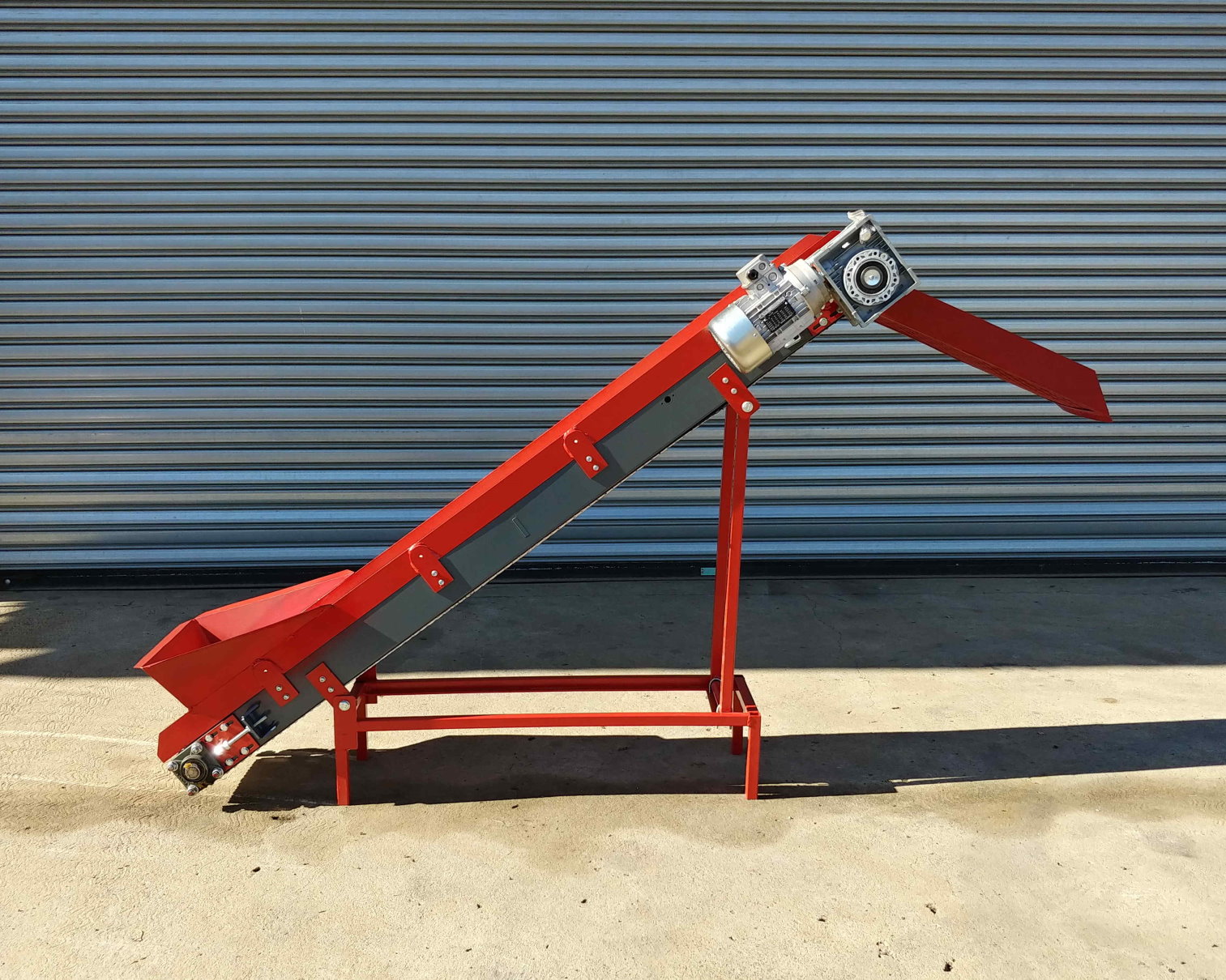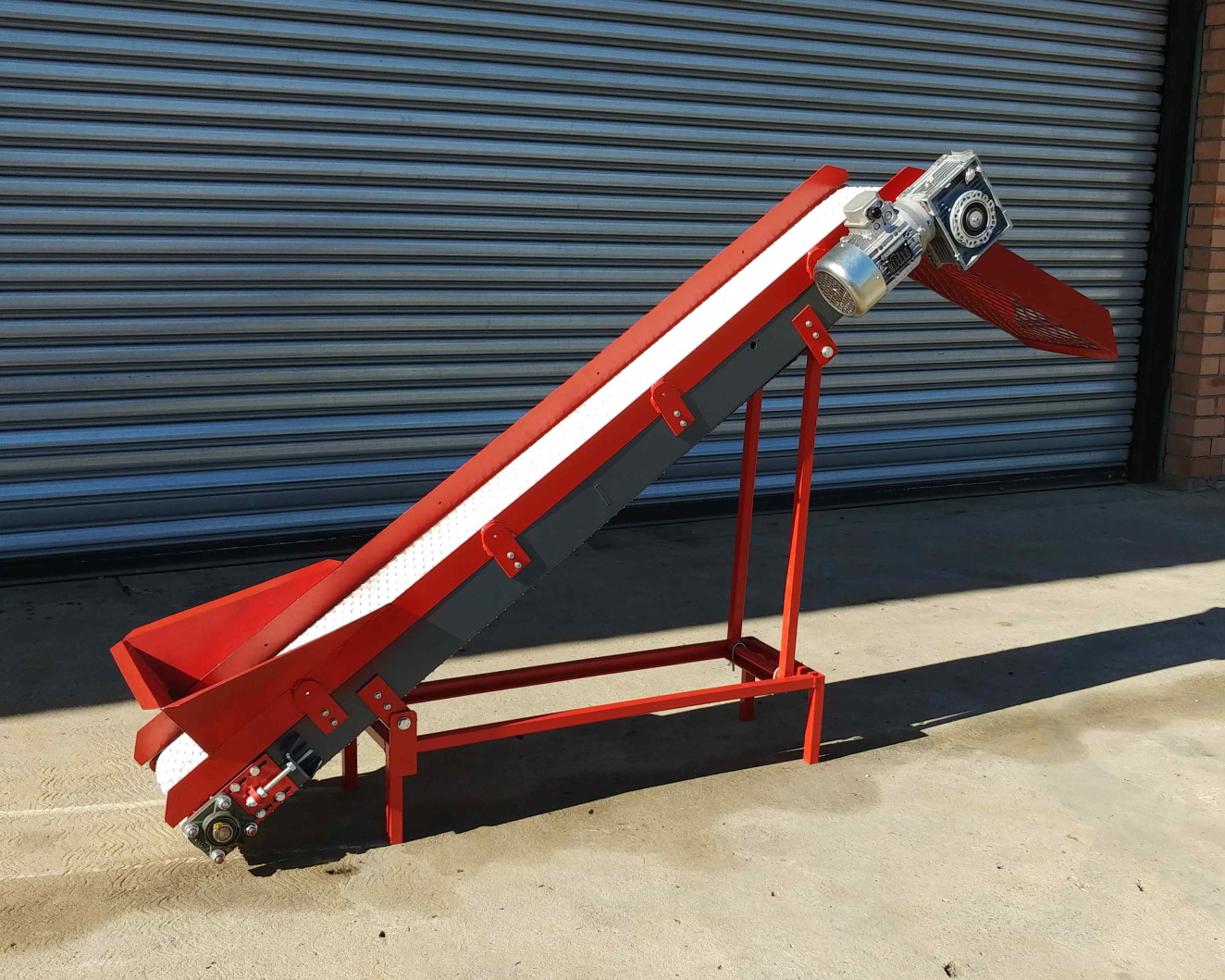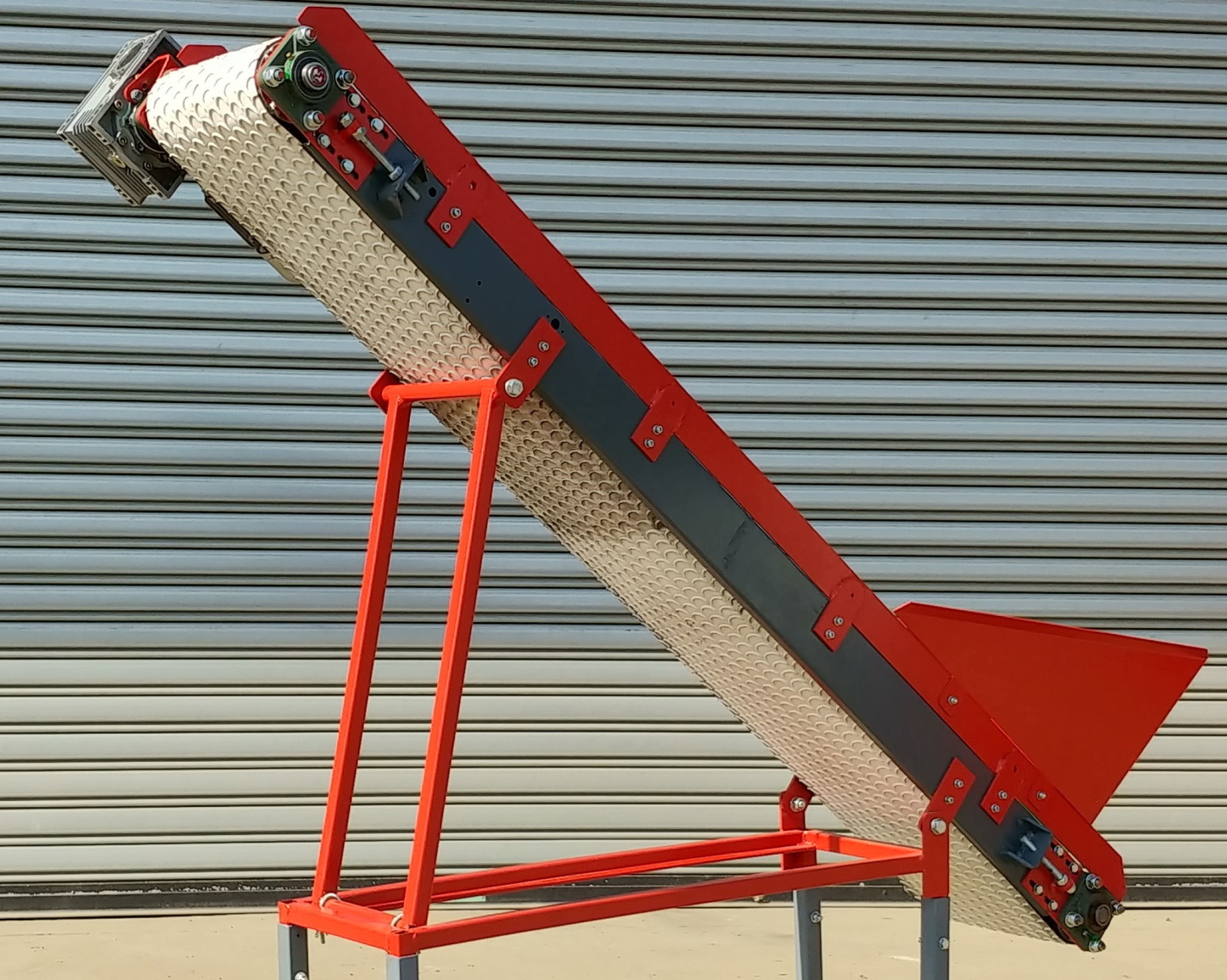Products
-
3.5 ton/hour
-
0.75 kW 380 Volt
-
2200Lx1400Hx300\450W
-
90kg
-
Adjustable height
Multi-Purpose Conveyor Belts
We use conveyor systems to carry and transport materials. You will typically find conveyor systems in factories and other controlled environments. They save energy and increase efficiency, standing the test of time.
What Does a Multi-Purpose Conveyor Belt Do?
Conveyors move objects from one point to another with reduced effort. The direction, speed, and curvature of the design of a conveyor system depend on the user's needs.
Conveyors move products in and out of a manufacturing or packaging line.
There are 2 categories of multi-purpose conveyors; Conveyor belting is lightweight or heavyweight. Lightweight belting handles materials under 75 kgs per 2.5 cm of width. They make lightweight belts of thermoplastic, lightweight rubber, and solid plastic. They are also non-woven.
Typical Industries Using Lightweight Belting
Pharmaceuticals, paper products, and food processing plants.
We Use Heavyweight Belting in These Industries
We use heavyweight belting systems in tough applications. We usually coat belts in PTFE to cope with high temperatures. Industries that use heavyweight belting are manufacturing, mining, and recycling. Industries that use heavyweight belting include food processing at high temperatures.
How Does a Multi-Purpose Conveyor Belt Work?
Conveyor belt systems transport goods using 2 automated pulleys. They loop over thick, robust materials. The pulleys operate at the same spin and speed in the same direction once in motion.
The belt moves between the two pulleys. We place rollers on the sides of belts if the products are bulky. We also place rollers alongside belts if the conveyors are long distance. The thought behind this is to support the transported goods.
Choose from a wide range of conveyor systems. They all transport goods from one point to the next. Some systems don't need belts, using wheels and rollers for moving goods. Most, however, rely on frames and belts, and sometimes, rollers for enhanced efficiency.
What Are the 3 Key Components of Conveyors?
All conveyor systems have three key components. These include the aluminium profile, the driving unit, and the extremity unit. In a conveyor belt system, the aluminium profile has a frame, a belt and supports.
We use motorised belts in industrial applications for enhanced efficiency and reliability. Driving units for motorised systems comprise an electrical drive, motor bracket, and counter bearings. Systems also use gravity or are manual.
What is the Extremity Unit of a Conveyor Belt?
Clamping straps and pulleys are the parts of the extremity unit. Its main function is to control the belt's movement. Manufacturers can add stands and lateral guides to it for certain applications, as needed. Users of conveyor belts should take their needs into account when selecting add-on modules.
4 Key Functions of Conveyor Belts
We use both lightweight and heavyweight belting in various industries. These have different settings and apply to a variety of industries. Whether you need light-duty or heavy-duty belting, conveyor belt systems enhance efficiency. They increase productivity, and they reduce labour costs.
- Belt systems are reliable and transport materials quickly.
- They stack products and materials at the end of the line of transportation.
- Conveyor systems help get goods from one point to the next. They streamline the entire process.
- They transport goods horizontally or vertically. This makes them a flexible option.
Are You Looking for Multi-Purpose Conveyor Bell System?
Get your multi-purpose conveyor belt system from Flo-Scan Technologies. Each industry has its unique needs. And each industry has a conveyor built to suit their requirements. Find out more about application specifications from our Flo-Scan team.
We use conveyor belts in the logistics industry. We also use them in shipping, underground mines, and production plants. You might need a conveyor system for your power plants or baked goods. Multi-purpose conveyor belts are the perfect go-to part of production. They are simple and reliable to use. Conveyor systems streamline processes, saving time and money.


